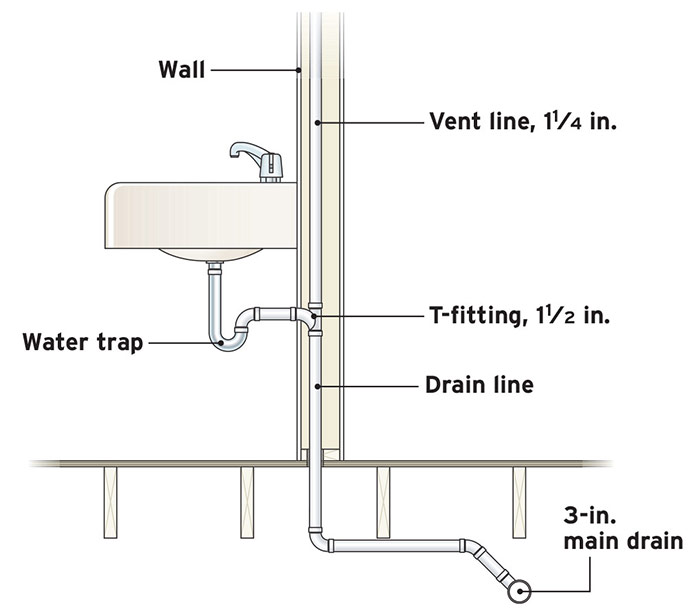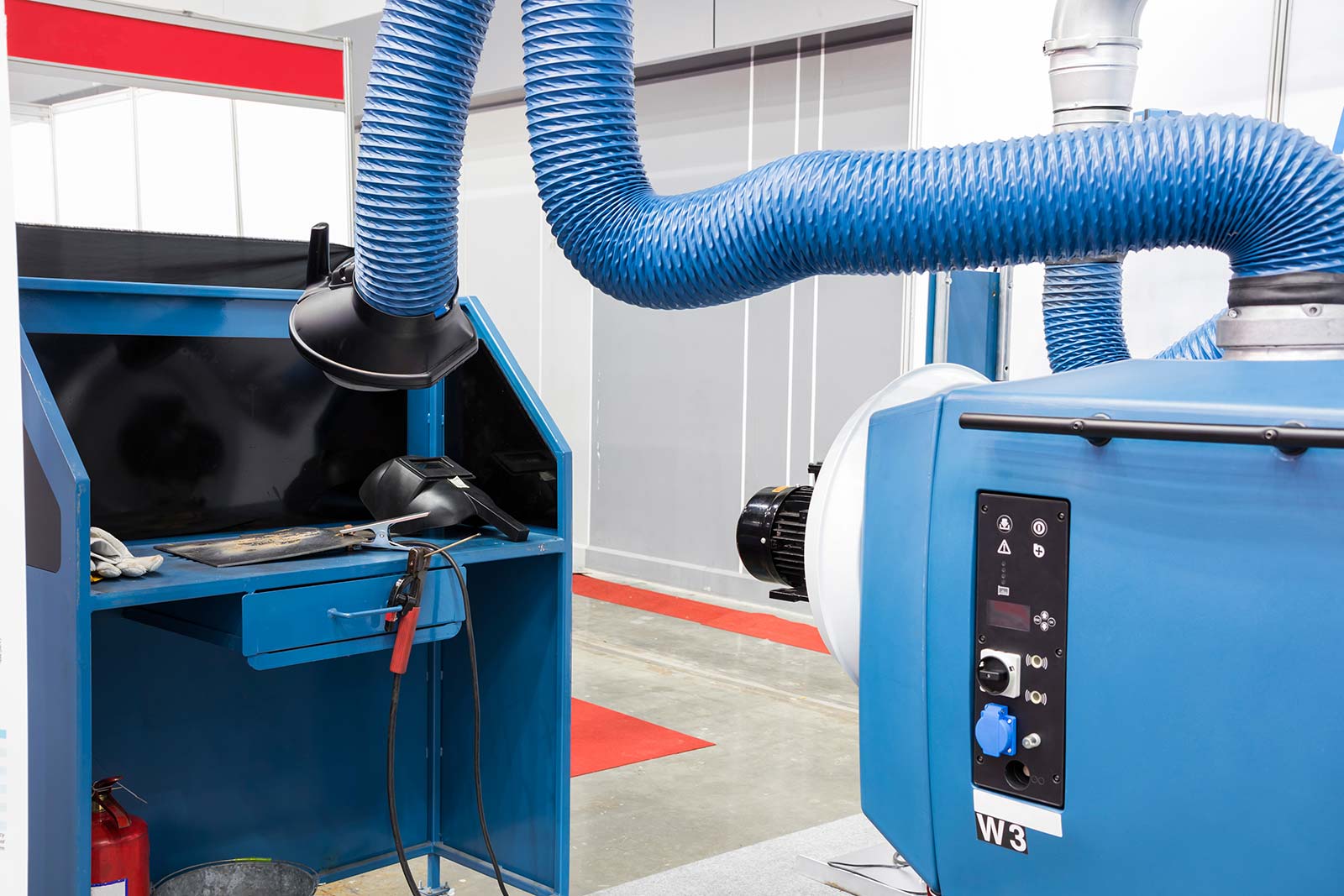Grasping The Necessity of Proper Ventilation in Plumbing Systems
Grasping The Necessity of Proper Ventilation in Plumbing Systems
Blog Article
On this page underneath you can get lots of extremely good advice regarding The Upsides of Proper Ventilation in Plumbing Design.

Proper ventilation in plumbing systems is frequently ignored, yet it is crucial for maintaining the functionality and safety and security of your home's plumbing. Ventilation helps regulate atmospheric pressure, stop the buildup of dangerous gases, and make certain the efficient removal of waste. In this overview, we will explore the significance of appropriate plumbing ventilation, just how it works, and the benefits it brings to your pipes system.
Exactly How Air Flow Works in Pipes Systems
Atmospheric Pressure Policy
Proper air flow preserves balanced air pressure within the plumbing system. When water flows via pipelines, it displaces air. Without adequate ventilation, this variation can produce negative stress, causing reduce drains pipes or siphoning of water from traps, which can cause unpleasant smells to leak into the home.
Preventing Drain Gas Build-up
Among one of the most essential functions of pipes vents is to stop sewage system gases, such as methane and hydrogen sulfide, from collecting within the home. These gases can position severe health risks and are highly flammable. Vent pipelines permit these gases to run away securely outdoors.
Helping in Waste Removal
Air flow assists in the efficient removal of wastewater by stopping airlocks in the drain system. When air can move freely with the vents, it permits water and waste to move efficiently with the pipelines, lowering the threat of obstructions and backups.
Advantages of Proper Air Flow
Boosted System Effectiveness
Effectively aerated plumbing systems run extra effectively, with less obstructions, faster draining pipes, and much less strain on the pipelines. This effectiveness prolongs the lifespan of the pipes system.
Improved Air High Quality
By preventing sewer gases from entering your home, proper air flow adds to much better interior air quality, making your living atmosphere healthier and much more comfy.
Preventing Water Damages
Adequate air flow assists prevent water from being siphoned out of traps, which can bring about sewer gases going into the home and triggering water damage in time.
Steps to Make Sure Appropriate Ventilation
Consulting Pipes Codes
Constantly get in touch with neighborhood plumbing codes when making or changing your pipes system. These codes give the essential standards for correct venting and guarantee your system meets safety criteria.
Regular Inspection and Maintenance
Normal evaluations can help determine potential air flow issues before they come to be significant troubles. Maintenance jobs, such as cleaning up air vent pipes and looking for clogs, are important for keeping the system in good working order.
Specialist Installment
For brand-new setups or significant alterations, it's wise to hire an expert plumbing. They have the knowledge to make certain the air flow system is correctly made and set up according to code.
Understanding Ventilation in Pipes
Ventilation in plumbing refers to the network of pipelines that allow air to move through the drain system. These vents offer multiple objectives, including regulating air pressure within the pipelines, preventing sewage system gases from entering the home, and assisting in the smooth flow of wastewater.
Types of Pipes Vents
Main Heap Vent
The primary stack air vent, also referred to as the vent pile, is the main air vent in a pipes system. It prolongs from the major drainpipe line up with the roof covering, enabling gases to run away and fresh air to get in the system.
Branch Vent
Branch vents link to the major stack vent and offer private fixtures, such as sinks, commodes, and showers. These vents ensure that each fixture has sufficient ventilation to operate appropriately.
Air Admittance Valve (AAV).
An Air Admission Shutoff (AAV) is a one-way shutoff that allows air to enter the pipes system without the requirement for a conventional air vent pipeline prolonging with the roofing system. AAVs are generally used in improvements or areas where setting up a standard vent is unwise.
Indications of Poor Ventilation in Pipes.
Slow Draining Fixtures.
If your sinks, bathtubs, or toilets are draining pipes gradually, it could be an indicator of inadequate air flow. Insufficient air circulation can develop a vacuum effect, making it challenging for water to drain pipes appropriately.
Gurgling Sounds.
Gurgling sounds coming from drains are commonly a result of air being drawn with water traps due to negative pressure in the pipes. This is a clear sign of not enough ventilation.
Unpleasant Smells.
Drain odors inside your home are a red flag that your plumbing system is not correctly ventilated. This might suggest that drain gases are not being adequately vented outside, leading to possibly hazardous problems.
Common Air Flow Errors.
Insufficient Vent Sizing.
Making use of small air vent pipelines can cause inadequate air circulation and stress inequalities in the system. It's important to make use of vents that meet the certain demands of your plumbing system.
Improper Vent Placement.
Putting vents as well much from the components they serve can lower their effectiveness. Proper placement ensures that air can stream freely and successfully with the system.
Disregarding Code Requirements.
Building ordinance supply certain standards for plumbing ventilation. Ignoring these codes can result in a system that fails to function appropriately and might result in costly repair services or health hazards.
Final thought.
Proper air flow is a critical part of any type of plumbing system, making sure that it operates efficiently and safely. By understanding the relevance of air flow, recognizing the indications of poor ventilation, and taking steps to maintain your system, you can avoid costly concerns and protect your home's air high quality.
4 Things You Should Know About Your Plumbing Vents
What Plumbing Vents Are
Also called a vent stack, a plumbing vent is a vertical pipe attached to your drain line that runs through your roof. The plumbing vent pipe, or plumbing air vent, removes gas and odors from your plumbing system and allows fresh air to enter the pipes, helping the water to flow out of the drain pipes.
What Plumbing Vents Do
Plumbing vents have two basic functions. One of which is to allow unpleasant smelling wastewater and sewer gasses to escape your plumbing system instead of entering your home. Plumbing vent pipes are typically located on roofs, away from windows, to ensure the fumes exit the home completely.
The other function of the plumbing vent is to move fresh air into your plumbing system. This helps move water through every plumbing fixture in your house, like toilets and sink drains. Think of the way in which you need to let a little air into the bottle as you pour soda in order to make the drink flow smoothly.
Different Types of Plumbing Vents
True vent: This is the most common vent option. In simplest terms, a true vent is a vertical pipe attached to your drain line that exits through the roof. They often function as the main vent that other fixtures can connect to. Re-vent pipe or auxiliary vent: Attached to the drain line near specific plumbing fixtures, re-vent pipes run up and over to connect to the main vent. Common vent: Two plumbing fixtures installed on opposite sides of a wall are typically tied into the vent stack using something known as a sanitary cross. Wet vent: This venting option operates as a drain pipe and a vent at the same time. Wet vent drainage systems drain water from one fixture while venting the air from another. Although they’ve been used for over 100 years, wet vent systems have only recently been added to the plumbing code in many areas. If you’re planning on installing one in a bathroom remodel, make sure you check your local code prior to construction. Loop vent: For free-standing fixtures like kitchen island sinks, loop vents are ideal. These vent pipes run under the floor, rise from the P-trap, and create a loop inside the cabinet sink. Air admittance valve: An AAV is a one-way mechanical valve typically installed at the site of the plumbing fixture. AAVs allow venting to occur without having to tie into a larger venting system. They’re ideal for venting fixtures where you aren’t able to easily connect to an existing vent system. Common Plumbing Vent Issues
Although vent pipes typically don’t have water flowing through them, they’re still subject to many typical plumbing issues. For example, clogs are one of the most common problems associated with sewer vent pipes. If your vent pipe gets clogged, all of your plumbing fixtures tied into the vent stack will be affected.
A sink with a slow drain that bubbles and gurgles or a strong sewage smell around your toilet are both indicators that your toilet vent pipe is clogged. Because most vent pipes exit through the roof, old leaves, twigs or even a bird’s nest could be clogging the pipe.
Clogs in your vent pipe system cause a buildup of negative pressure, meaning that water won’t be able to flow out of your home very well. It’s similar to putting your finger over the opening of a straw to trap water inside. When you remove your finger, the water is able to flow out of the straw.
If you suspect you have any blockage in your vent, make sure you have a professional come examine the situation. Left unchecked, a blocked air vent can lead to other costly repairs, like leaks and sediment buildup.
Under Pressure
Pipe vents are essential aspects of a home’s plumbing system. Owning a home means learning about all sorts of things you never put much thought into before. But by understanding as much as you can about the important systems of your home, you can keep those budgets intact and those anxiety levels low.
https://www.homeserve.com/en-us/blog/home-improvement/plumbing-vents/

Do you appreciate reading up on Why Plumbing Air Vents Are Important? Try to leave a comment below. We would be delighted to hear your ideas about this post. Hoping that you visit us again later on. Appreciated our write up? Please share it. Help somebody else locate it. We enjoy your readership.
Call Today Report this page